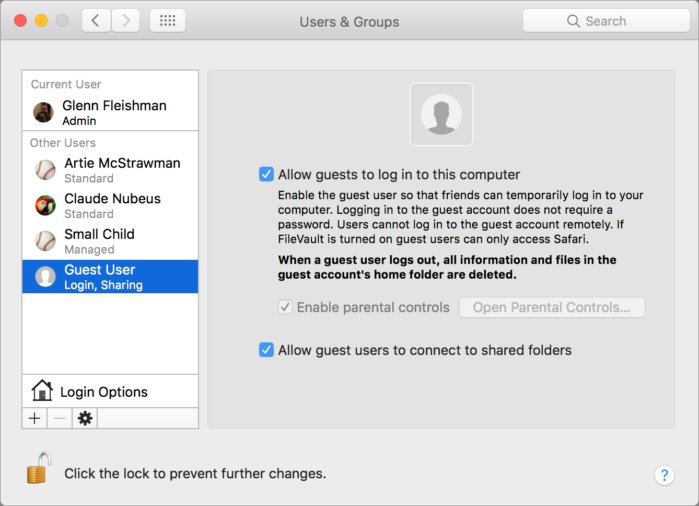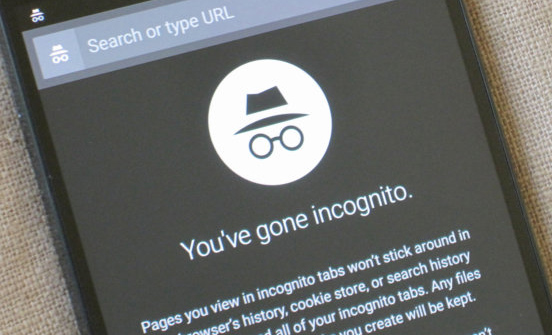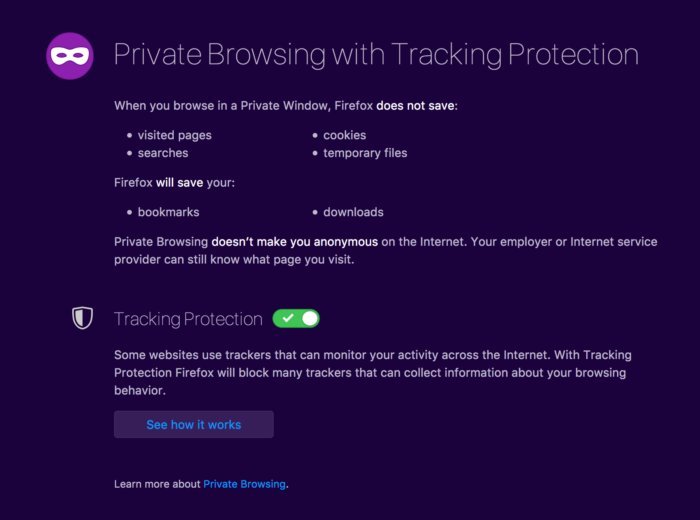How to delete browsing traces on Mac
In case you use the same computer with others, security issues are always top priority. Security from personal accounts, even the entire browsing history we have visited. Often you will think about how to delete the entire browsing history on Macs, such as the article Clear your browsing history, the Firefox browser cache on Windows and Mac OS X that we have previously instructed.
However, in addition to the traditional way of doing so, you can completely build a web browsing security class from the beginning, without deleting the history after access. In the following article, we will show you how to delete browsing traces on your Mac.
1. Log in to your Guest Account on your Mac:
The Guest Account account on the Mac will help users to erase all browsing traces, just after accessing, we can log out this account.
When using the Guest Account, a temporary account will be set up. And when logging out, all data of that temporary account will disappear. But first, set up a Guest Account account on your Mac according to the How to create a Guest account on a Mac.

2. Private Browsing on Safari for Mac OS:
Safari has Private Browsing feature, deletes cookies, stores IP and downloaded files after exiting the browser.
To use Private Browsing on Mac OS, first go to File> New Window Private, or press Command + Shift + N as well.

3. Anonymous in Chrome on Mac OS:
Chrome browser allows users to browse the web in Incognito mode or Guest browsing mode. When users use these two modes, Chrome will not save any browsing history, but will delete all cookies after we turn off the incognito tab.
To use an anonymous browser on your Mac, go to New> New Incognito Window , or use Command + Shift + N.

4. Private Browsing on Firefox for Mac OS:
Like Chrome, Private Browsing of Firefox will erase all history and data the whole time we surf the web. From browsing history, cookies, passwords, downloaded files will be erased, even new boomark will not be created in this mode.
To use Private Browsing window in Firefox, go to New> New Private Window , or shortcut keystroke Command + Shift + P.

The above are 4 ways to help users to erase all web surfing traces on Mac. You will not need to re-search the entire history and then delete them as before. Just using 1 of the 4 ways above is completely gone after surfing the web on a Mac.
Refer to the following articles:
- 5 steps to fix a crashed and inactive Mac error
- Instructions on how to install macOS Sierra (clean install) 10.12 on Mac
- How to create a MacOS Sierra installed USB drive 10.12
I wish you all success!
You should read it
- How to save web browsing history when browsing in incognito mode on Chrome browser
- How to browse common mode and anonymously with a window on Firefox
- How to make the browser always start in incognito mode
- Anonymous browsing has more uses than you think
- Distinguish guest mode and incognito mode on Chrome
- Enable guest browsing on Google Chrome and Chromebook
- How to switch open tabs in Firefox to private mode
- How to open an anonymous tab on Chrome, Coc Coc, Firefox, ...
May be interested
- Clear browsing history, Firefox browser cache on Windows and Mac OS X
 clearing your browsing history is one of the great solutions to protect your privacy, others won't know which web site you have visited and remove your browser history and searches.
clearing your browsing history is one of the great solutions to protect your privacy, others won't know which web site you have visited and remove your browser history and searches. - How to delete browsing history on iPhone, iPad quickly
 how to delete browsing history on iphone, ipad quickly. when surfing the web for a long time on iphone / ipad, our browsers will become more 'lumbering' because they have to store cached data (cache), browsing history, cookies ...
how to delete browsing history on iphone, ipad quickly. when surfing the web for a long time on iphone / ipad, our browsers will become more 'lumbering' because they have to store cached data (cache), browsing history, cookies ... - How to delete Web browser history on iPad?
 if you don't want someone to know the history of your web browser on your ipad, the pages you have visited. the best way is to delete that history. in the article below, network administrator will guide you how to delete web browser history on ipad.
if you don't want someone to know the history of your web browser on your ipad, the pages you have visited. the best way is to delete that history. in the article below, network administrator will guide you how to delete web browser history on ipad. - View and delete browsing history in Microsoft Edge browser
 by default microsoft edge web browser will remember the user's browsing history. which includes information such as: visited websites, access passwords, download data ... so how can you manage the browsing history on microsoft edge. here's how you can do it.
by default microsoft edge web browser will remember the user's browsing history. which includes information such as: visited websites, access passwords, download data ... so how can you manage the browsing history on microsoft edge. here's how you can do it. - How to clear browsing data on Chrome
 the history eraser utility will erase all browsing data with different selections.
the history eraser utility will erase all browsing data with different selections. - How to Delete Browsing History on Firefox
 if you want to hide your recent activities and clear your browsing history in mozilla firefox, then this article is for you.
if you want to hide your recent activities and clear your browsing history in mozilla firefox, then this article is for you. - Clear cookies and browsing history in IE, Google Chrome, Firefox and Safari
 how to delete cookies, it's worth knowing the role of a cookie and why you might really want to keep it.
how to delete cookies, it's worth knowing the role of a cookie and why you might really want to keep it. - Facebook will have the feature to delete history this year
 recently, facebook chief financial officer david wehner revealed that facebook is developing a tool to help users remove traces of their activities.
recently, facebook chief financial officer david wehner revealed that facebook is developing a tool to help users remove traces of their activities. - Instructions for security of personal information on the Internet by Deseat.me
 when we access any website address, your personal information is recorded, more or less. the fact that we delete the web browser is also unlikely to help you secure all the information.
when we access any website address, your personal information is recorded, more or less. the fact that we delete the web browser is also unlikely to help you secure all the information. - Delete Viber messages on the computer
 because when you use viber on your computer you cannot log out as usual, so your personal information and chat history are very easily noticed by curious eyes. therefore, we will guide you how to delete traces on viber in the following article.
because when you use viber on your computer you cannot log out as usual, so your personal information and chat history are very easily noticed by curious eyes. therefore, we will guide you how to delete traces on viber in the following article.










 Change Google DNS on Mac
Change Google DNS on Mac How does macOS High Sierra unlock? How to stop?
How does macOS High Sierra unlock? How to stop? Lock Mac OS X screen when needed
Lock Mac OS X screen when needed Does the Mac really need a firewall?
Does the Mac really need a firewall? Why shouldn't you disable the System Integrity Protection feature on the Mac?
Why shouldn't you disable the System Integrity Protection feature on the Mac? How to set password protection folder on Mac
How to set password protection folder on Mac